Hoi An Ancient Town rests peacefully along the romantic Hoai River, carrying within it an ancient beauty seemingly frozen in time…
Hoi An – a small city along the gentle Hoai River – carries an ancient charm, where every moss-covered roof and old street seems to preserve the traces of time and history.
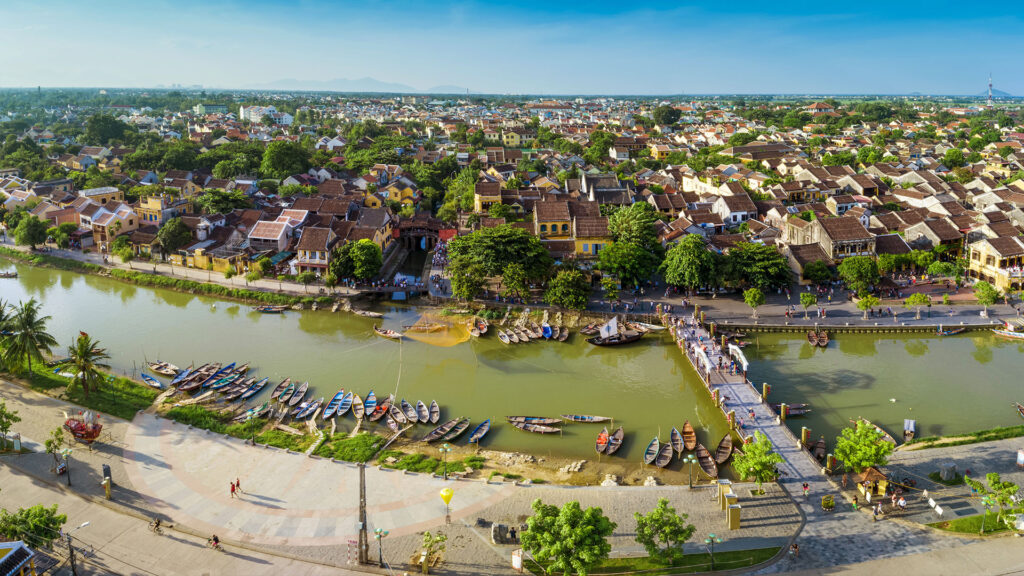
Recognized by UNESCO as a World Cultural Heritage Site since 1999, Hoi An Ancient Town has never failed to captivate visitors with its timeless beauty—rustic and simple, yet poetic and extraordinarily charming.
HISTORY AND CULTURAL VALUES
Hoi An was once a bustling international trading port in Central Vietnam from the 16th to 18th centuries, serving as a meeting point for merchant ships from Japan, China, and Western countries. Before that, the area belonged to the Kingdom of Champa and lay along the “Maritime Silk Road,” playing a crucial role as a vital link in regional trade.
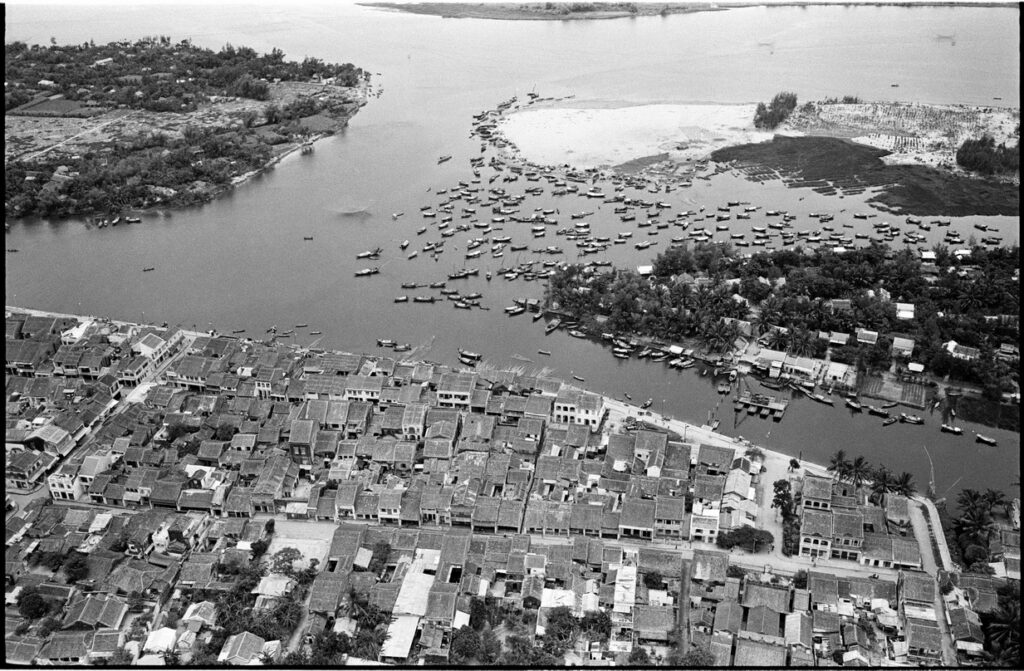
Hoi An Ancient Town in 1967, photo by Jochen Voight
In the 19th century, as the river mouth gradually silted up, maritime trade in Hoi An declined and gave way to Da Nang—a new port town developed by the French. Fortunately, Hoi An was largely spared from destruction during wars and also avoided the wave of urbanization in the late 20th century. Thanks to this, the Ancient Town has preserved its traditional appearance almost intact for hundreds of years.
With its rich and multi-layered cultural depth, Hoi An is regarded as a “living museum” of Vietnamese urban architecture and lifestyle. This ancient town stands as an outstanding example of a perfectly preserved traditional Southeast Asian trading port.
The structures here reflect a unique fusion of cultures across different periods: Vietnamese-style houses and streets interwoven with Chinese assembly halls and temples, an ancient bridge built by Japanese merchants, and French colonial architectural imprints. Alongside these tangible heritages, Hoi An also preserves a diverse range of intangible culture—from customs and spiritual practices to folk arts—all of which are actively maintained and passed down by the local community.
It is precisely these remarkable values that led UNESCO to recognize Hoi An as a World Cultural Heritage Site in 1999, based on two criteria:
(i) Hoi An is an exceptional testimony to cultural exchange through various periods in an international trading port; and
(ii) Hoi An is an outstanding example of a traditional Asian trading port, preserved almost intact.
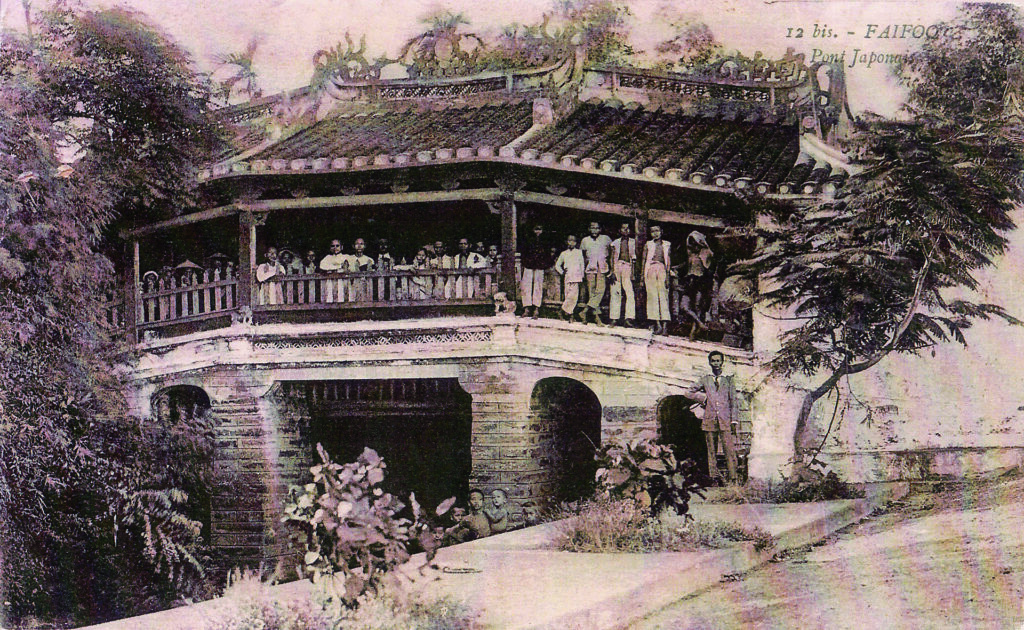
What makes Hoi An so captivating is the nostalgic architecture preserved in every street and rooftop. Despite the passage of time, the Ancient Town retains its old houses with signature yellow-painted walls, moss-covered tiled roofs, and weathered facades imbued with history.
The most common type of house here is the one- or two-story townhouse, narrow in width but extending deeply in length, forming the tube-house style typical of ancient urban centers. These houses often feature wooden frames and brick load-bearing walls to withstand Central Vietnam’s harsh climate.
The traditional layout consists of multiple connected sections: from the shopfront to the inner courtyard and the rear house, interspersed with open courtyards to ensure ventilation. Notably, Hoi An’s roofs are tiled in the yin-yang style (alternating convex and concave tiles), creating a graceful, undulating roofline that is both elegant and durable against the elements.
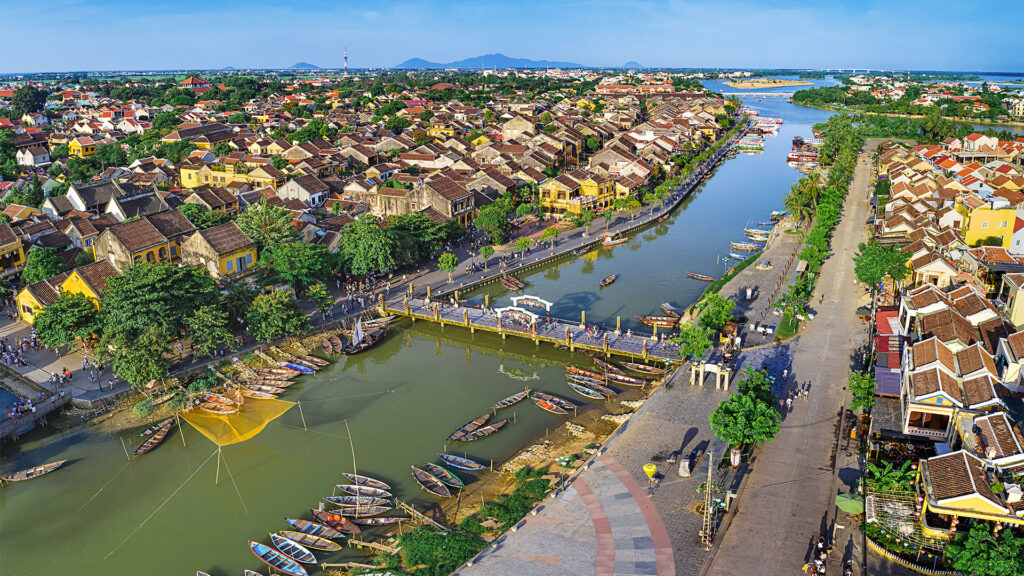
Hoi An’s streets are laid out in a chessboard pattern, with short and narrow lanes winding around rows of adjoining houses. Strolling through these peaceful little streets, visitors can fully experience the simple lifestyle of Hoi An’s residents: from the image of an elderly person sitting on the porch, to bougainvillea blooming against yellow walls, and the calls of street vendors echoing each morning.
All of these evoke a life that is humble, genuine, and tranquil—just like the soul of the people of Quang. Hoi An Ancient Town is truly a place where the past and present harmonize: deeply historic yet vibrantly alive, carrying its own unique rhythm within modern life.
Standing out in the heart of the Ancient Town are unique architectural landmarks that have become symbols of Hoi An. The most notable is the Japanese Covered Bridge (Chua Cau)—a more than 400-year-old bridge spanning a small canal of the Hoai River, built in the early 17th century with contributions from Japanese merchants.
The Japanese Covered Bridge, with its yin-yang tiled arched roof, enshrines the deity Bac De Tran Vu—the guardian of the land—rather than Buddha, despite its name “chua” (pagoda). Having undergone several restorations, this intricately carved bridge still retains its solemn, ancient beauty and is considered the “soul” of Hoi An. Its image is even featured on Vietnam’s 20,000 VND banknote.
In addition to the Japanese Covered Bridge, visitors should not miss the famous old houses such as Tan Ky, Quan Thang, and Duc An, which preserve the traditional architecture and family heritage of ancient merchant generations.
The ancient Chinese assembly halls—such as those of the Fujian, Chaozhou, and Cantonese communities—with their magnificent architecture and intricate carvings, also enrich the multicultural character of the Ancient Town. Viewed from above, the entirety of Hoi An is cloaked in a seamless expanse of reddish-brown tiled roofs, accented by yellow walls, creating a harmonious, timeless, and captivating picture.
CULTURE, CUSTOMS, AND TRADITIONAL FESTIVALS
Hoi An not only captivates visitors with its architectural landscape but also enchants them with its rich cultural identity and distinctive traditional festivals and customs. For generations, the local community has preserved numerous folk practices and beliefs in their daily lives. Almost every village surrounding the town has a communal house dedicated to the Thanh Hoang (the village’s guardian deity), and each year, they solemnly hold the Ky Yen Festival at the beginning of spring to pray for peace and prosperity.
During village festivals, residents join hands to clean and decorate communal houses and temples, organize solemn worship ceremonies, and enjoy the lively festivities with folk games and boat races—vividly reflecting the community’s cultural life. In particular, the riverside and coastal areas of Hoi An still preserve the Cau Ngu (Whale Worship) Festival and traditional boat races held at the beginning of each new year.
On the full moon of the second lunar month each year, fishing villages hold a grand Ca Ong (Whale Worship) ceremony to honor the whale—the savior of fishermen at sea—accompanied by ba trao singing, a unique folk performance that reenacts river and maritime life. These spiritually rich festivals not only pray for favorable weather and calm seas but also strengthen community bonds and preserve the cultural heritage of past generations.
Alongside its long-standing traditional festivals, Hoi An is also famous for the “Full Moon Lantern Festival”—a unique cultural event held on the 14th day of the lunar month since 1998. On this night, all electric lights in the Ancient Town are turned off, leaving only the gentle glow of thousands of lanterns strung across the streets and the full moon hanging in the sky. Hoi An is instantly transformed into a magical festival of lights, shimmering like a fairytale land.
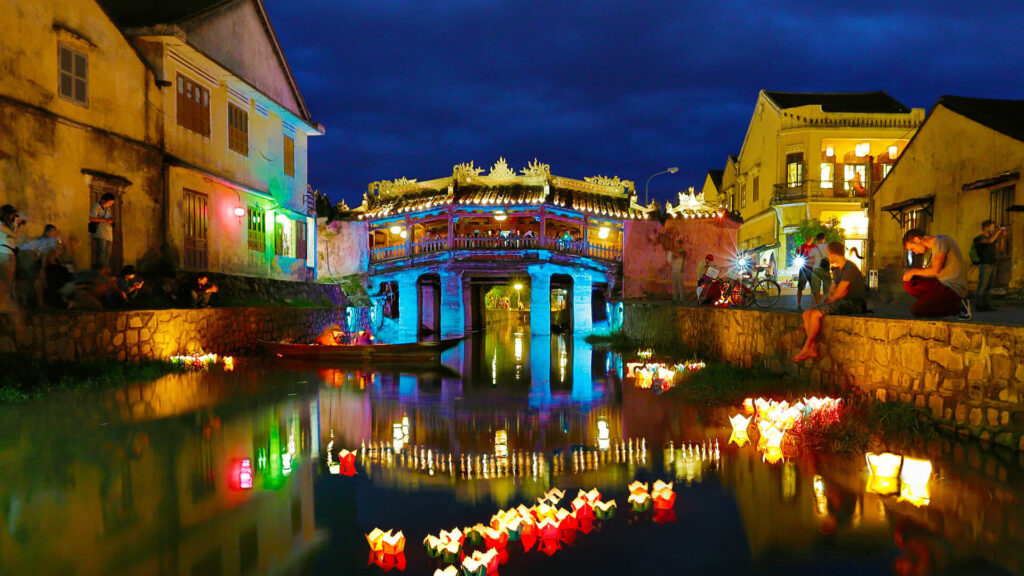
On the Hoai River, visitors release colorful floating lanterns, turning the water into a dazzling galaxy of lights. Across the streets, traffic is restricted to create space for pedestrians to fully enjoy the nostalgic atmosphere. Traditional cultural and artistic activities also take place: from bai choi singing and folk performances to games such as blindfolded pot breaking, tug-of-war, and Chinese chess—reviving memories of Hoi An in centuries past.
Visitors who come to Hoi An during the Full Moon Festival have the rare chance to feel as if they have “traveled back in time” by several centuries, immersing themselves in a vibrant folk festival atmosphere filled with unforgettable emotions.
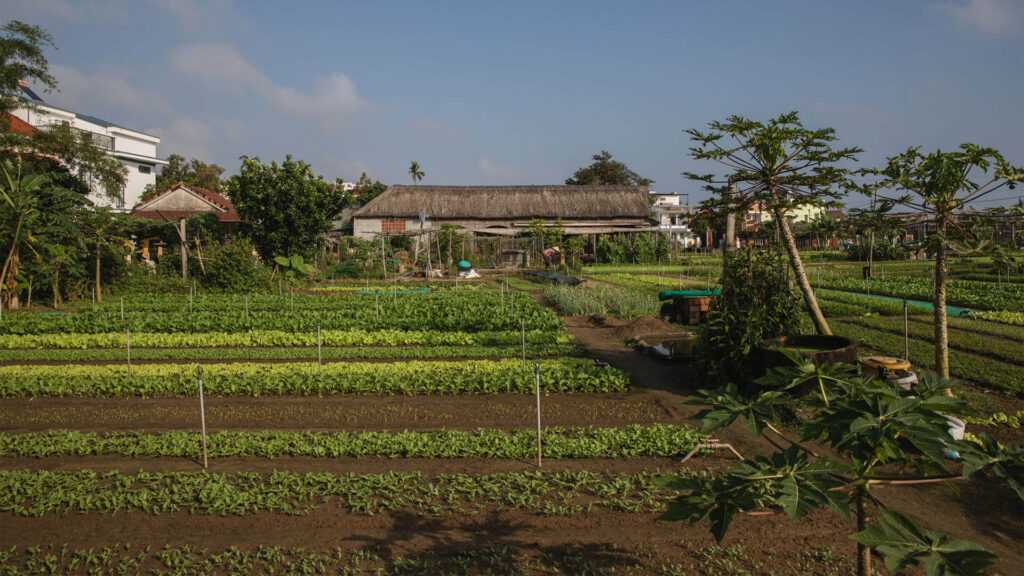
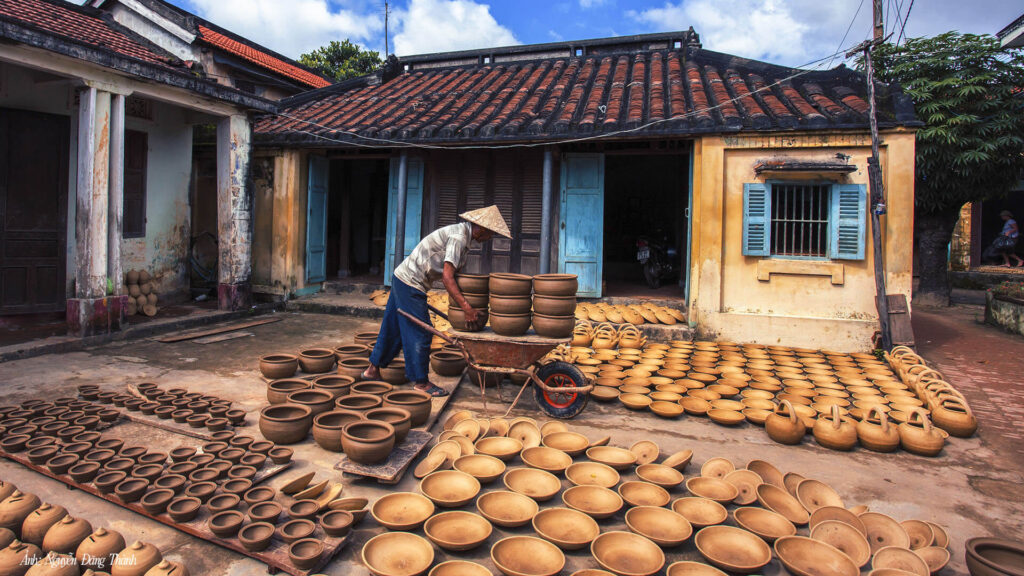
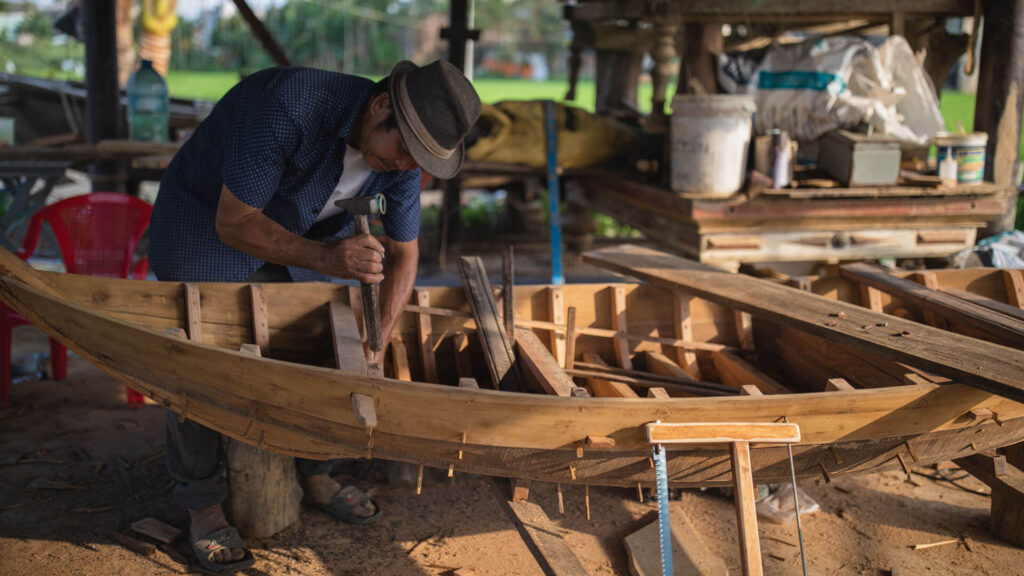
In addition, Hoi An preserves many traditional craft villages—the cradle of its local culture. Just outside the town, visitors can explore Thanh Ha Pottery Village, famous for its exquisite handmade ceramics; Kim Bong Carpentry Village, known for shipbuilding and fine woodcraft; the vibrant Hoi An Lantern-making Village; and Tra Que Vegetable Village, which supplies fresh herbs to Hoi An’s cuisine. Each of these villages has safeguarded centuries-old techniques and today serves as a fascinating destination where visitors can experience the crafts firsthand and create their own memorable souvenirs.
HOI AN CUISINE – DISTINCTIVE FLAVORS OF A LAND OF CULTURAL CONVERGENCE
A journey to discover Hoi An would not be complete without experiencing its local cuisine. As a land where the river meets the sea and once a bustling hub for merchants from all over the world, Hoi An boasts a diverse culinary scene with its own distinctive character. Thanks to its proximity to rivers and the sea, fresh seafood has always played a central role in the daily meals of Hoi An’s residents.
The dishes here represent a harmonious blend of local ingredients and cooking styles influenced by various cultures—from Chinese and Japanese to European cuisines introduced through trade. The long-established Chinese community in Hoi An has also enriched the town’s gastronomy, creating many unique dishes that can only be found here.
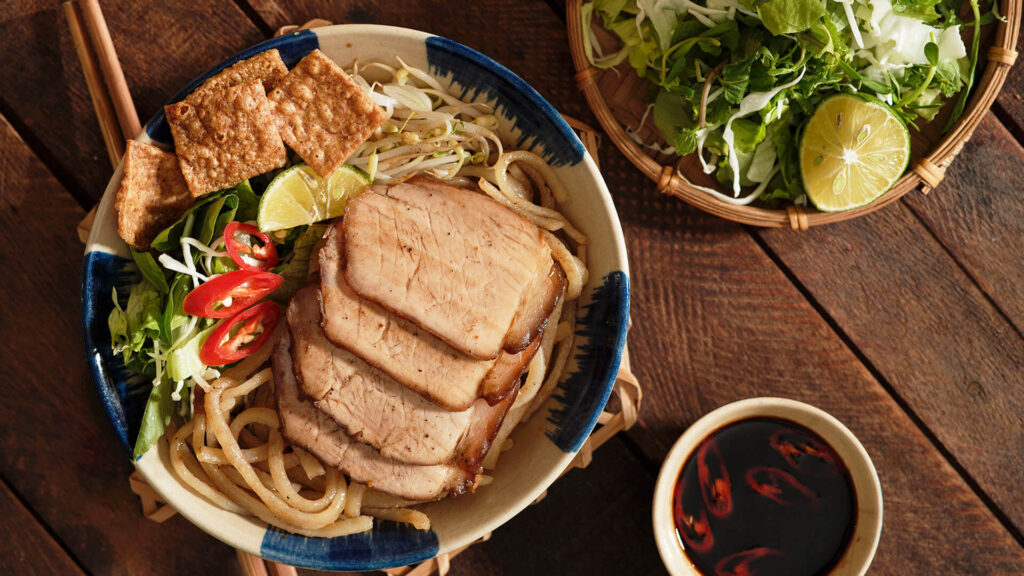
When it comes to Hoi An’s specialties, the most iconic dish is undoubtedly cao lau —the legendary noodle dish synonymous with the town’s name. Cao lau features noodles meticulously handcrafted from rice flour soaked in water from ancient wells, served with slices of char siu pork, crispy pork cracklings, fresh herbs, and a touch of rich sauce. The noodles are chewy, fragrant, and golden in color—distinctly different from any other type of noodle in Vietnam.
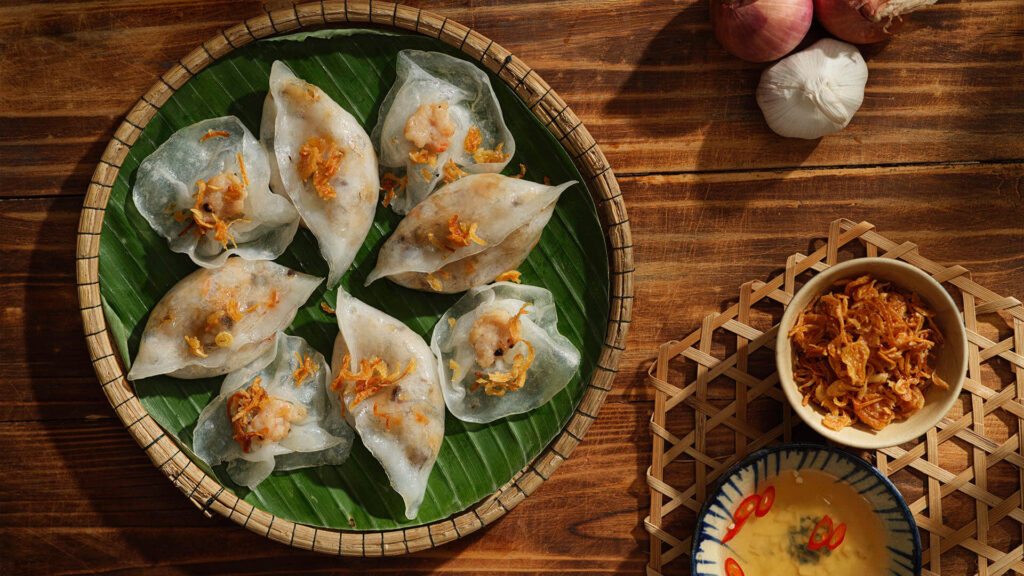
Alongside cao lau, Hoi An is also known for the delicate “banh bao – banh vac” (also called White Rose), crafted from silky rice flour dough filled with shrimp and pork, then perfectly steamed. These translucent, rose-shaped dumplings, when dipped in sweet-and-sour fish sauce, offer an elegant and unforgettable taste.
Another specialty reflecting Sino-Vietnamese influence is wontons—either fried or served in soup. With their thin, crispy wrappers encasing savory shrimp and pork filling, they are typically enjoyed with flavorful sauce and fresh herbs.
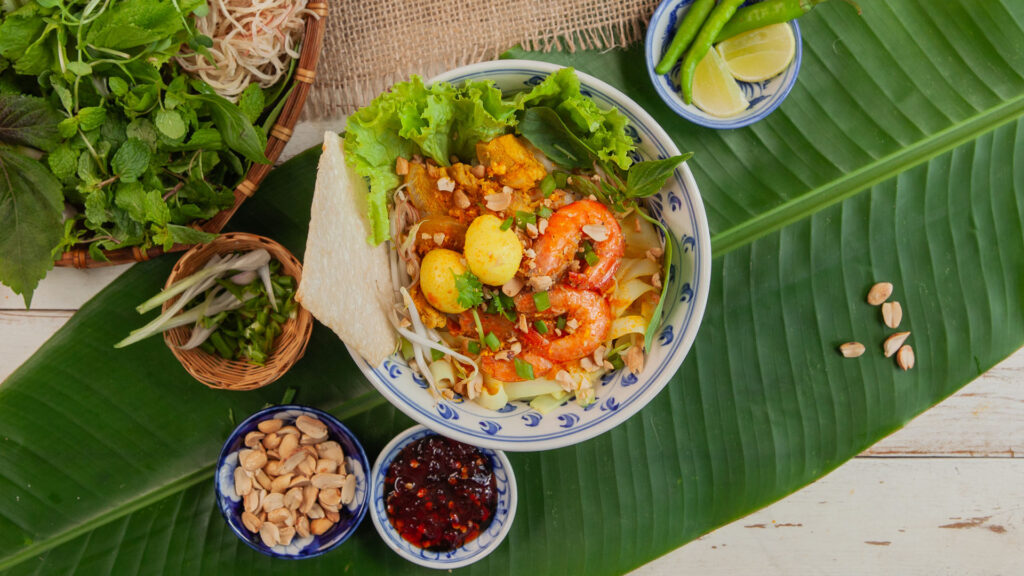
That’s not all—Hoi An’s street food scene offers countless rustic yet irresistible delights. Visitors can savor a bowl of golden mi Quang noodles topped with shrimp, pork, quail eggs, and crispy rice crackers; a fragrant plate of Hoi An chicken rice with turmeric-infused sticky rice, shredded free-range chicken, and herbs mixed with onions; or hold in hand the world-famous Banh Mi Phuong—a crispy baguette stuffed with an array of meats, pâté, pickled vegetables, and herbs, hailed as the “best banh mi in the world.”
There are also local favorites such as banh dap hen xao (crushed rice crackers served with stir-fried baby clams scooped with rice paper), silky banh beo chen (steamed rice cakes in small bowls topped with shrimp-and-pork sauce), crispy golden banh xeo pancakes wrapped with fresh herbs, and refreshing sweet corn pudding (che bap). Each dish offers an unforgettable culinary experience, adding to Hoi An’s renowned gastronomic reputation far and wide.
When in Hoi An, be sure to take a food tour through its markets and street vendors—you will fully savor the traditional Vietnamese flavors infused into every dish of this charming ancient town.
TRAVEL EXPERIENCES: DESTINATIONS, ACTIVITIES, AND SHOPPING
Though small in size, Hoi An is filled with countless fascinating experiences for visitors to discover. A leisurely walk around the Ancient Town is the very first activity—and one that simply cannot be missed.
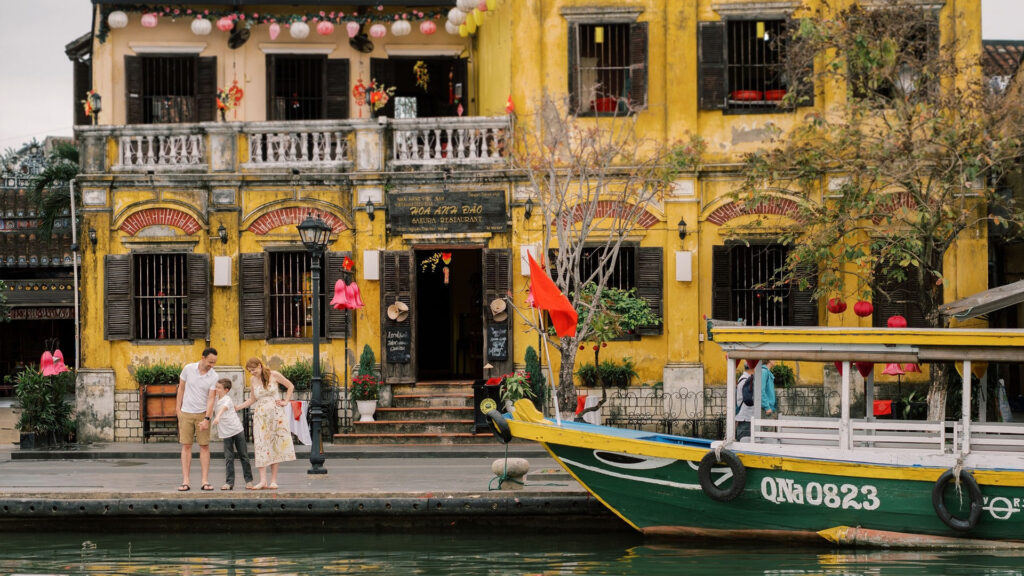
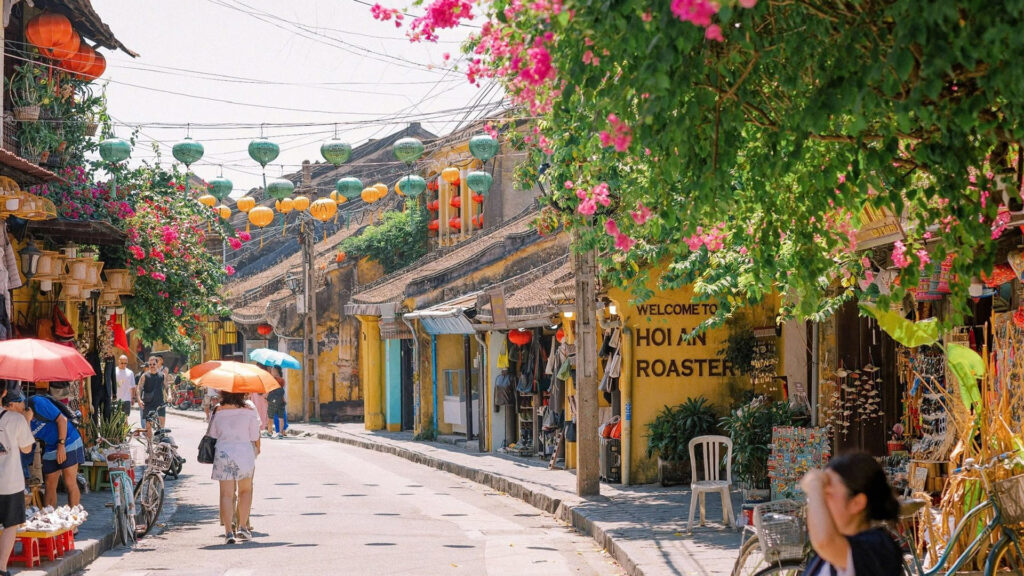
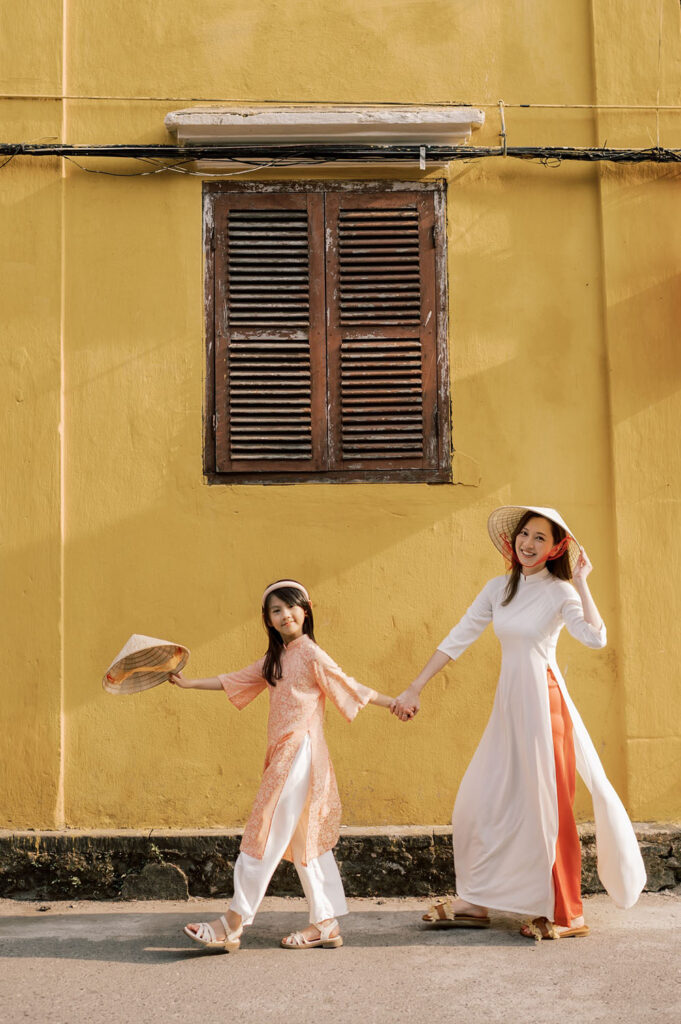
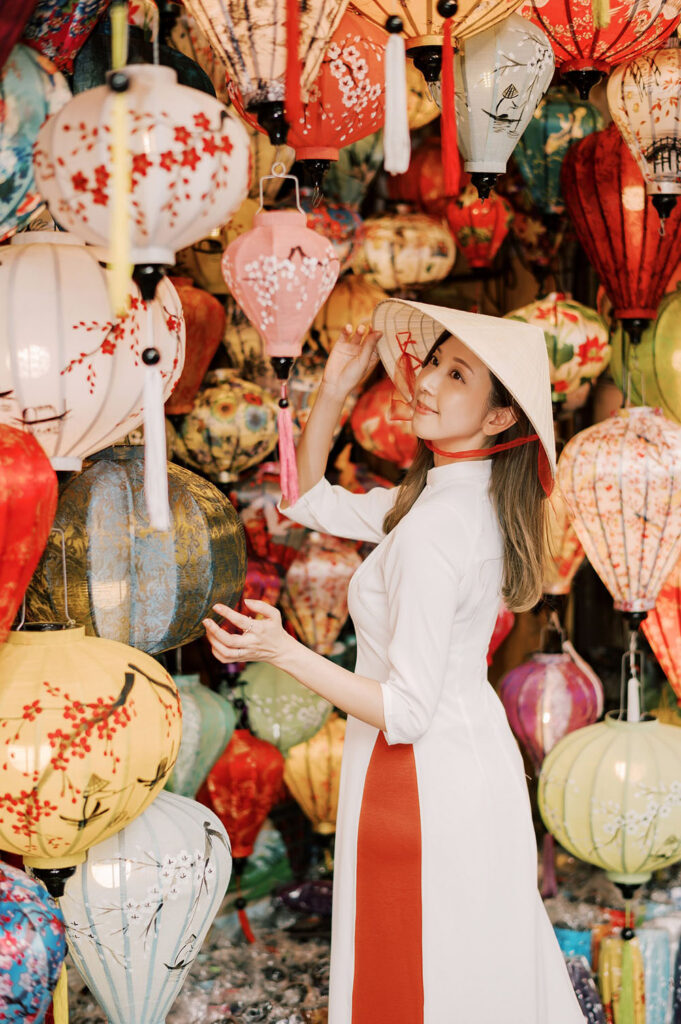
The streets of Nguyen Thai Hoc, Tran Phu, and Bach Dang—with their rows of ancient houses, balconies draped in bougainvillea, and lanterns strung across the lanes—offer hundreds of perfect “Instagrammable” corners. In the early morning, the Ancient Town is serene and free of motorbikes (as daytime motorbike traffic is restricted to keep the area open and pleasant for visitors), making it the ideal time for a peaceful stroll, sightseeing, and capturing memories beside its iconic golden walls.
Visitors can also rent a bicycle to explore—an excellent way to weave through narrow alleys, enjoy the breeze from the Hoai River, and soak in the town’s slow and tranquil rhythm.
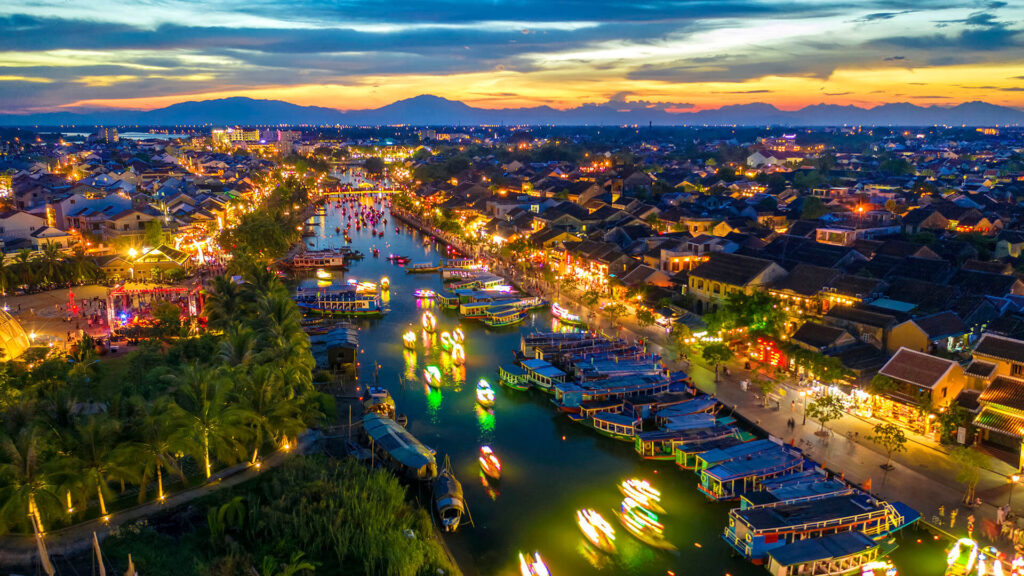
As the sun sets, head to the picturesque banks of the Hoai River. You can take a wooden boat ride along the river, watching the ancient town as dusk falls. The most enchanting moment comes when hundreds of lanterns are lit, their shimmering reflections dancing on the water—transforming the Hoai River into a magical fairytale scene.
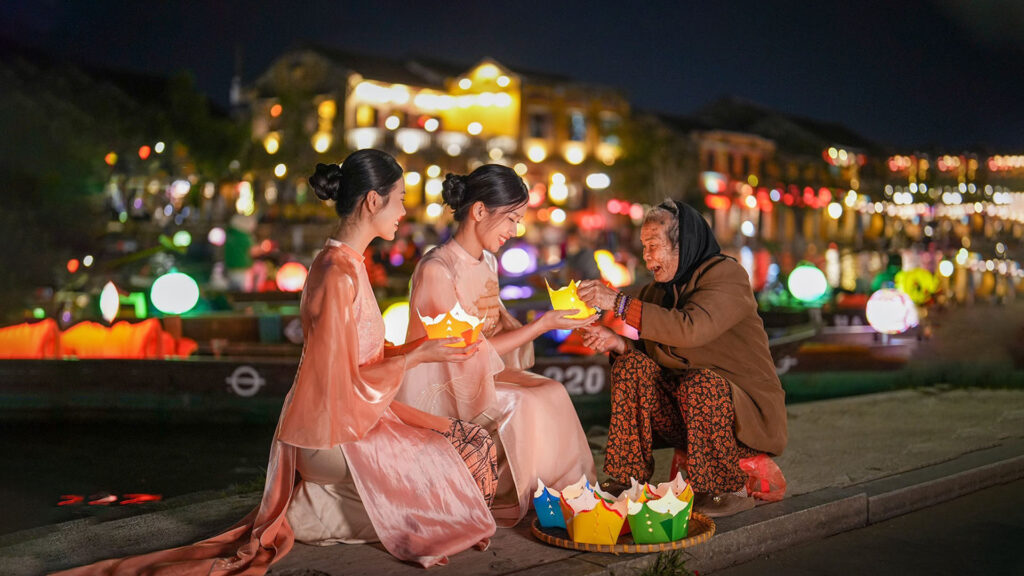
A 30-minute boat ride will gently carry you along the river, while the friendly boatman shares stories of the hometown. Don’t miss the experience of releasing floating lanterns: buy a few delicate paper lanterns from vendors along the riverbank, light the candles inside, and let them drift gently on the water while whispering your wishes. On the full moon nights each month, hundreds of lanterns are released at once, transforming the river into a dazzling “sea of lights” that captivates every gaze. This magical scene will undoubtedly become one of the most unforgettable memories of your trip.
Hoi An at night is especially charming and romantic. As the town lights up, make your way to Nguyen Hoang Night Market, located just near the Japanese Covered Bridge. The bustling market comes alive with hundreds of stalls selling vibrant silk lanterns, exquisite handmade souvenirs, paintings of the ancient town, and countless street food vendors offering tempting aromas of grilled skewers, sweet soups, and local pastries.
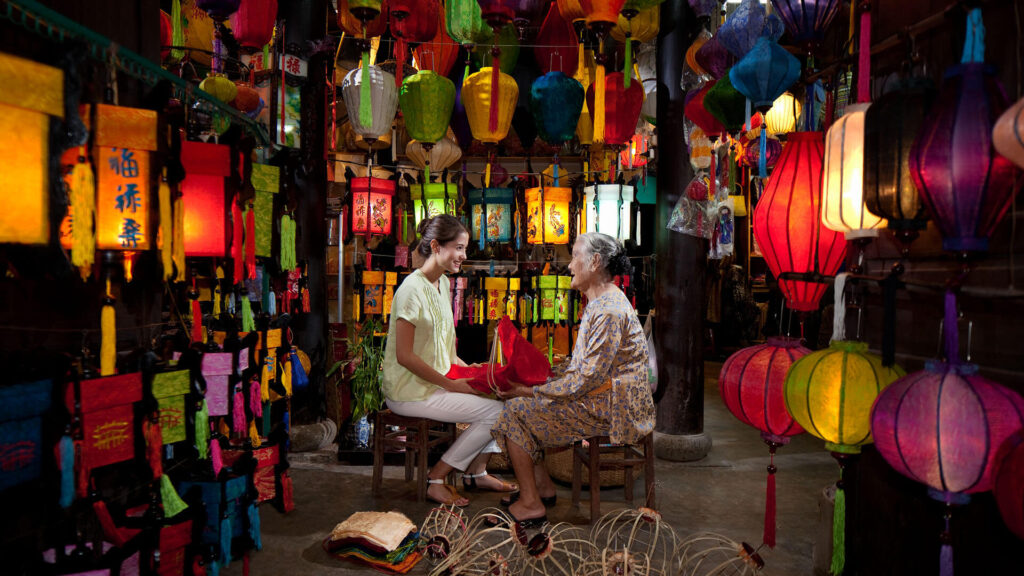
Visitors can freely shop for Hoi An lanterns to bring home as symbolic gifts of the Ancient Town, or choose soft silk fabrics and light linen clothing perfectly suited for the tropical climate. The art of embroidery and tailoring in Hoi An is also highly developed, reflected in finely hand-embroidered scarves, dresses, and ao dai available at long-standing family-owned shops.
In particular, Hoi An has long been renowned for its “express tailoring” service. Tailoring is a traditional craft here, and since the early 2000s, quick-turnaround tailoring has become a unique tourism product of Hoi An—attracting large numbers of visitors thanks to its convenience and high quality.
Strolling around the Ancient Town, you will notice hundreds of tailor shops nestled among the old houses, always bustling with customers coming and going. It is estimated that Hoi An currently has around 350 tailoring establishments, fabric stores, and accessory shops catering to visitors’ needs. Simply bring your own design idea or select from available samples, and you can have a perfectly fitted outfit made to your measurements within just a few hours—thanks to the town’s ultra-fast, highly professional tailoring process, with each stage from cutting to stitching to finishing carefully specialized.
While waiting for your clothes to be finished, you can freely continue exploring the town and return to pick up your order right on time—convenient, isn’t it? Thanks to this unique service, Hoi An was once honored by Time magazine as one of the places offering the fastest and most affordable bespoke tailoring in the world. So don’t miss the chance to “treat” yourself to a custom-made outfit as a keepsake—it will be a wonderful gift, both tangible and sentimental, from the Ancient Town.
After a full day of discovery, the evening in Hoi An still holds many more activities to enjoy.

You can stop by a riverside café or a rooftop terrace of an old house to enjoy a rich cup of Vietnamese drip coffee while gazing at the lantern-lit streets below. Some well-known cafés worth mentioning include Faifo Coffee (with its panoramic rooftop view over the ancient tiled roofs), Hoi An Roastery, and Cocobox, each offering a rustic ambiance and delicious drinks.
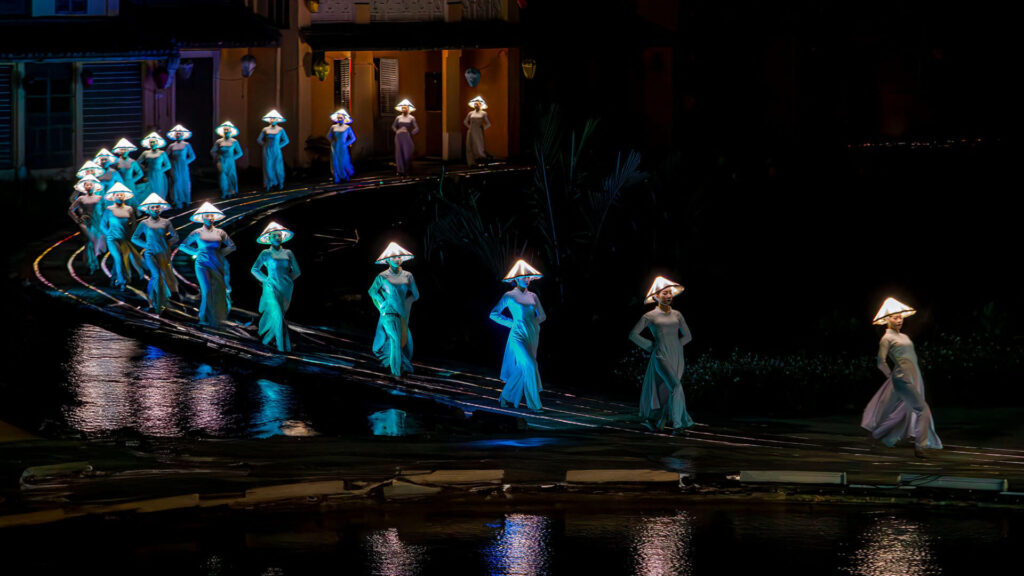
If you wish to experience culture and the arts, the “The Hoi An Memories Show” outdoor spectacle is the ideal choice. This large-scale production, meticulously staged with nearly 500 performers, vividly recreates 400 years of Hoi An’s trading port history on an open-air stage set amidst the river landscape. This grand show has received numerous international awards and has been praised by visitors as one of the most “breathtaking and visually stunning” performances in the world.
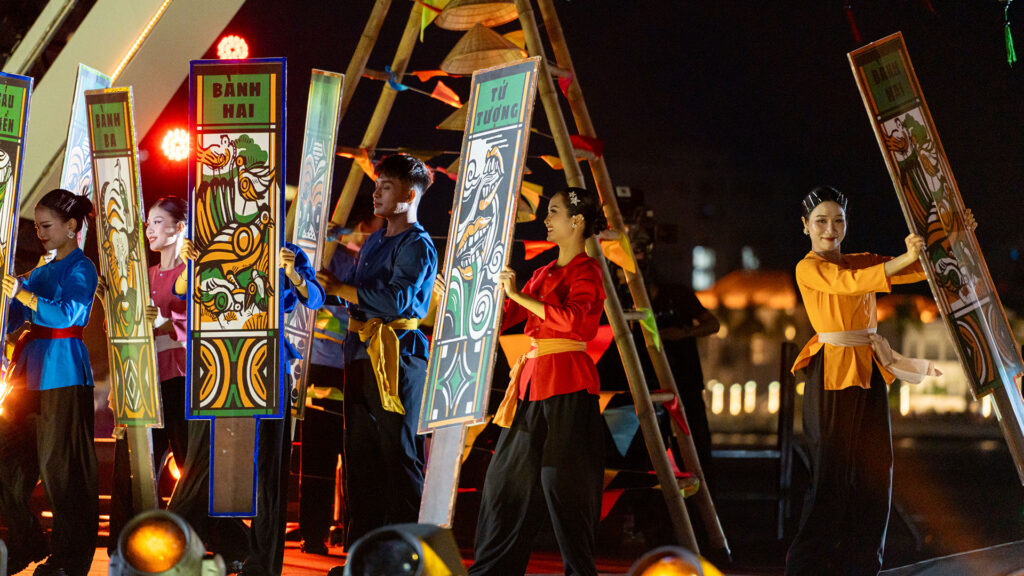
In addition, Hoi An by night also offers folk art performances, bai choi singing at small riverside stages, and charming retro-style bars featuring gentle acoustic music. While it may not be as bustling or boisterous as larger cities, Hoi An’s night has its own enchanting allure—serene, shimmering, and utterly captivating.
THE BEST TIME TO VISIT AND TRAVEL TIPS FOR VISITORS
Hoi An is charming in every season, but the best time to visit the Ancient Town is from February to April each year. During this period, spring weather is pleasantly cool, the sunlight is gentle, and there is little to no rain—making it an ideal time for strolling through the streets and enjoying outdoor activities.
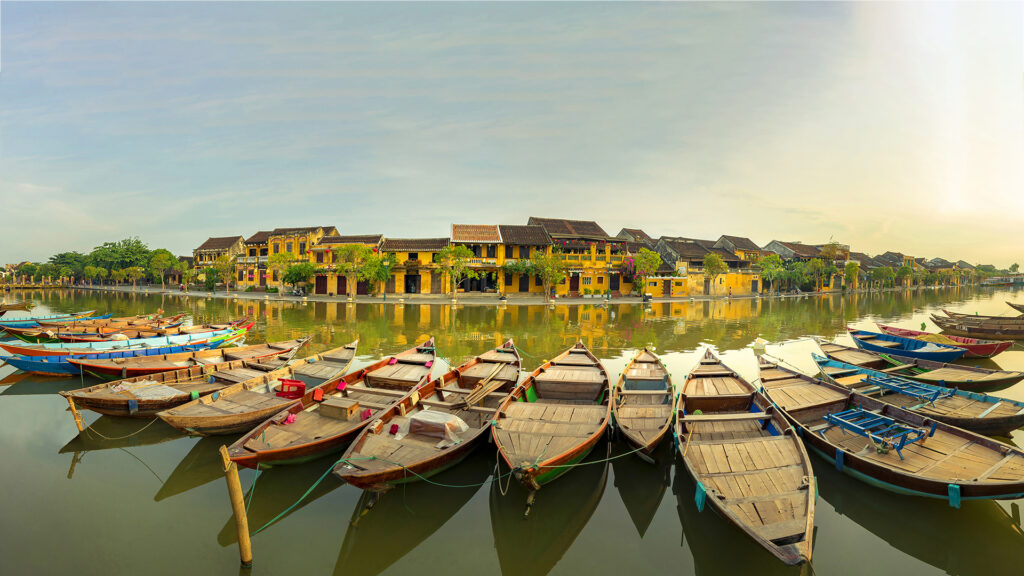
- From May to August is summer, when Hoi An enters the dry season with plenty of sunshine and little to no rain, though temperatures can be quite high and some days intensely hot. If you don’t mind the heat, this is still a popular time for many visitors, as it’s perfect for combining your trip with a beach holiday—An Bang and Cua Dai beaches in Hoi An are especially ideal for swimming during the summer.
- From September to January, Hoi An enters its rainy season, with frequent showers and even flooding in the Ancient Town during October and November. Traveling at this time requires careful consideration and checking the weather forecast, since while the sight of the flooded town navigated by boats can be fascinating, certain activities may be limited. On the other hand, if you visit during Tet (Lunar New Year, around January–February) or the Mid-Autumn Festival (the 8th lunar month), you will be immersed in the lively atmosphere of traditional celebrations filled with lanterns, lion dances, and colorful cultural activities.
- Transportation: Hoi An is located about 30 km from Da Nang City. International visitors usually fly into Da Nang and then take a bus or taxi for about 45 minutes to reach the Ancient Town. Within Hoi An itself, as mentioned earlier, walking or cycling is the best way to explore the Old Town, since motorized vehicles are restricted during many hours of the day.
Don’t forget to bring a hat or cap and sunscreen if you’re visiting in summer, and an umbrella if you come during the rainy season. Finally, make sure to have a camera or a fully charged phone with you—every corner of Hoi An is picture-perfect, and you’ll surely want to capture countless moments in this heritage town.
TICKET INFORMATION & NOTES FOR VISITING HOI AN ANCIENT TOWN
TICKET TYPE
| Loại vé | Price (VND) | Notes |
| International Visitors | 120.000 | Includes admission to 5 out of 21+ heritage sites |
| Domestic Visitors (Vietnamese) | 80.000 | Includes admission to 5 out of 21+ heritage sites |
| Children under 1m | Free | |
| Children from 1m – 1.4m | 50.000 | Discounted ticket based on height |
| Children under 15 years old / Local residents | Free | According to the town-wide free entry policy |
The ticket includes:
- Visit the Ancient Town and 5 heritage sites out of more than 20 (Ancient Houses, Assembly Halls, Museums, Japanese Covered Bridge, Quan Cong Temple, etc.).
- Traditional art performances at the Traditional Art Performance House (10:15 AM and 3:15 PM daily).
- Evening folk games and street performances (7:00 PM – 8:30 PM).
- A heritage site map is included with the ticket.
Schedule and Highlights:
- Heritage site visiting hours: 7:00 AM – 5:30 PM.
- Pedestrian street hours: 9:00 AM – 11:00 AM and 3:00 PM – 9:30 PM (until 10:00 PM in summer).
- Lantern Festival and floating lantern release: on the full moon night of each lunar month.
Code of Conduct
- Dress respectfully when entering pagodas and assembly halls.
- No smoking, and do not bring food or drinks into heritage sites.
- Do not touch antiques or artifacts.
- Maintain order and avoid making loud noises.
- Do not litter and comply with waste separation rules.
Useful Tips
- Purchase tickets at the official counters located at the entrances to the Ancient Town (Tran Phu, Nguyen Thai Hoc, Le Loi, etc.).
In the eyes of travelers from near and far, Hoi An always holds a magical charm: simple yet captivating, ancient yet full of life and freshness. If you are looking for a place that combines cultural and historical depth with poetic scenery, rich culinary flavors, and unique experiences, then Hoi An is truly your dream destination. Set foot in this ancient town just once, and you will feel the “soul of time” flowing through every roof and street—and when you leave, your heart will linger, unable to forget.
DANANG TOURISM PROMOTION CENTER